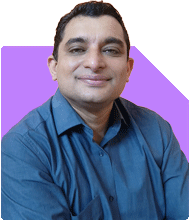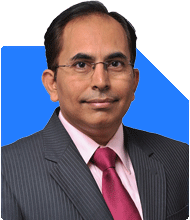Ramalingam Kalirajan |10902 Answers |Ask -Follow
Mutual Funds, Financial Planning Expert - Answered on May 07, 2024
He has an MBA in finance from the University of Madras and is a certified financial planner.
He is the director and chief financial planner at Holistic Investment, a Chennai-based firm that offers financial planning and wealth management advice.... more

I do SIP of Rs.30,00,000 ( thirty lacs ) per month....... Every year I increase by 10 percent. I am 41 years please guide...
Your strategy of increasing your SIP amount by 10% annually demonstrates a proactive approach towards wealth accumulation.
Given your age of 41, you have a good amount of time ahead to capitalize on the power of compounding.
Let's break down your plan and see how we can optimize it further:
Your current SIP amount of Rs. 30,00,000 per month is substantial and shows a strong commitment towards your financial goals.
Increasing your SIP amount by 10% annually is a prudent move, considering inflation and rising expenses over time.
However, it's important to ensure that this increase doesn't strain your finances or impact your ability to meet other financial obligations.
As a Certified Financial Planner, my suggestion would be to periodically review your financial situation and reassess your SIP strategy accordingly.
Consider factors such as changes in income, expenses, and market conditions to make informed decisions about adjusting your SIP amounts.
Additionally, diversification across different asset classes and investment vehicles can help mitigate risk and optimize returns.
While SIPs are a great way to systematically invest in mutual funds, exploring other avenues such as debt funds, equities, and alternative investments can further enhance your portfolio's performance.
Remember to stay focused on your long-term financial goals and avoid making impulsive investment decisions based on short-term market fluctuations.
Lastly, I want to commend you for your dedication to financial planning. With continued discipline and strategic decision-making, you're well-positioned to achieve your financial aspirations.
Keep up the great work, and remember that I'm here to support you every step of the way!
You may like to see similar questions and answers below
Ramalingam Kalirajan |10902 Answers |Ask -Follow
Mutual Funds, Financial Planning Expert - Answered on May 15, 2024
Ramalingam Kalirajan |10902 Answers |Ask -Follow
Mutual Funds, Financial Planning Expert - Answered on May 17, 2024
Ramalingam Kalirajan |10902 Answers |Ask -Follow
Mutual Funds, Financial Planning Expert - Answered on Jul 30, 2024
Samraat Jadhav |2511 Answers |Ask -Follow
Stock Market Expert - Answered on Nov 25, 2024
Anu Krishna |1749 Answers |Ask -Follow
Relationships Expert, Mind Coach - Answered on Dec 17, 2025
Anu Krishna |1749 Answers |Ask -Follow
Relationships Expert, Mind Coach - Answered on Dec 17, 2025
Radheshyam Zanwar |6748 Answers |Ask -Follow
MHT-CET, IIT-JEE, NEET-UG Expert - Answered on Dec 17, 2025
Anu Krishna |1749 Answers |Ask -Follow
Relationships Expert, Mind Coach - Answered on Dec 17, 2025
Dr Shakeeb Ahmed Khan |184 Answers |Ask -Follow
Physiotherapist - Answered on Dec 17, 2025
T S Khurana |538 Answers |Ask -Follow
Tax Expert - Answered on Dec 17, 2025
T S Khurana |538 Answers |Ask -Follow
Tax Expert - Answered on Dec 17, 2025
Janak Patel |72 Answers |Ask -Follow
MF, PF Expert - Answered on Dec 17, 2025
Ramalingam Kalirajan |10902 Answers |Ask -Follow
Mutual Funds, Financial Planning Expert - Answered on Dec 17, 2025
Samraat Jadhav |2511 Answers |Ask -Follow
Stock Market Expert - Answered on Dec 17, 2025


























